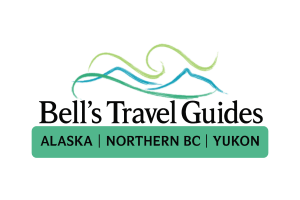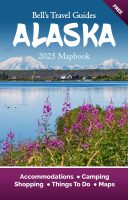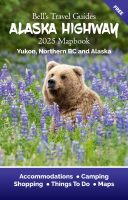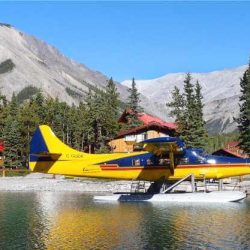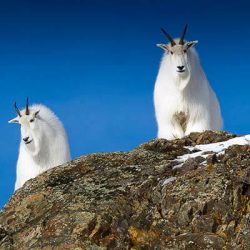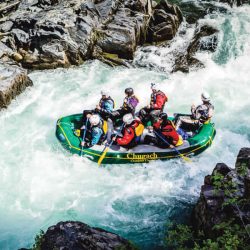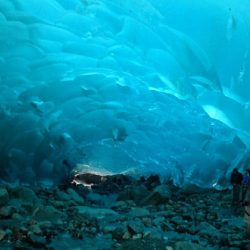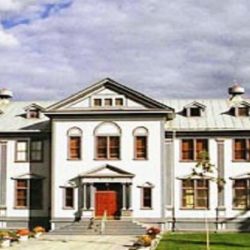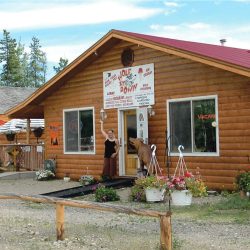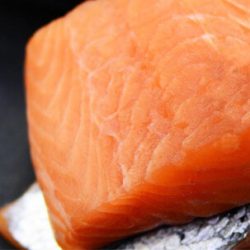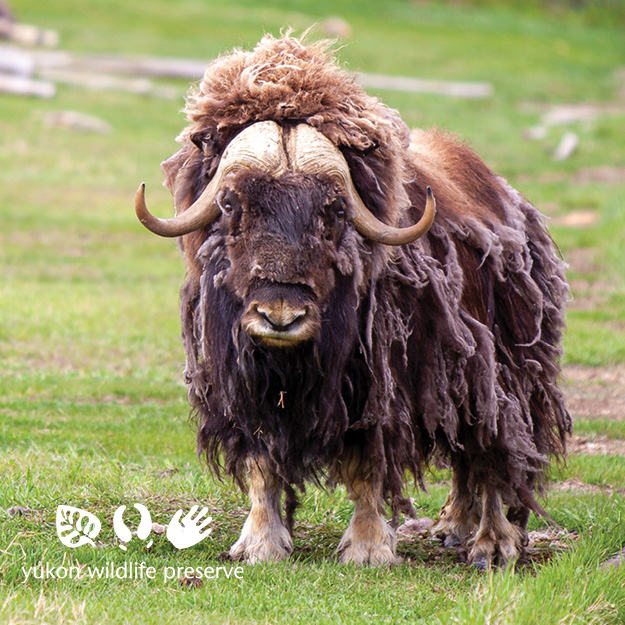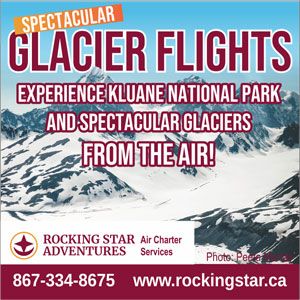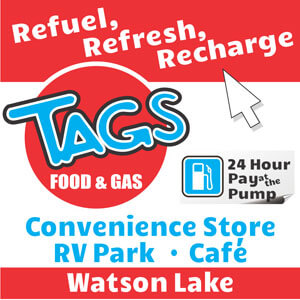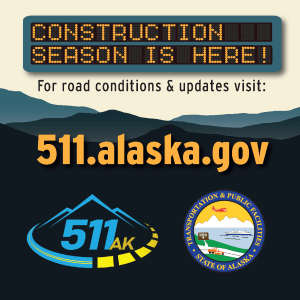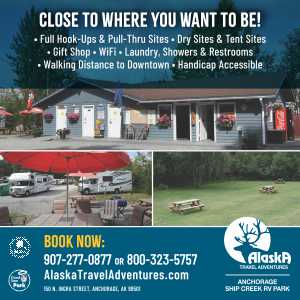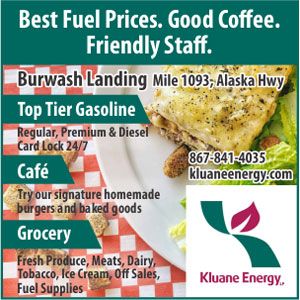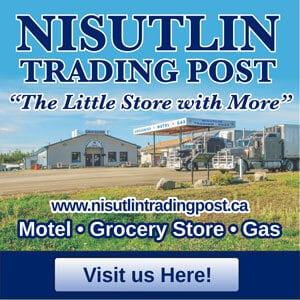Plan the Perfect Yukon or Alaska Trip With 60+ Years of Expertise
Planning an adventure to Alaska or the Yukon is exciting — but it can also feel overwhelming. With long distances between towns and dozens of bucket-list destinations, it’s hard to know where to begin your travel plans.
That’s exactly why we built the Bell’s Alaska Trip Planner — a free, easy-to-use tool created by the same experts who have been helping travelers explore Alaska and the Yukon for over 60 years.
Whether you dream of seeing North America’s tallest mountain (Denali / Mt. McKinley), watching brown bears feeding in Katmai National Park, standing at the edge of a glacier near Seward, or driving the iconic Alaska Highway through British Columbia, the Yukon, and Alaska — this planner helps you build a trip that perfectly matches your style and interests.
✅ No signup required
✅ Works for road trips, cruise passengers, car and RV travelers, and fly-in visitors
✅ Over 1,100 verified Yukon & Alaska businesses included
✅ Covers 50+ northern towns and 30+ activity categories
✅ Free to use — forever
Why You Need an Alaska Trip Planner
Alaska is bigger than Texas, California, and Montana combined. It’s stunning — but it’s not a place you want to “wing it.” Without a plan, you could end up between towns without realizing how far the next stop really is.
Our Trip Planner helps you choose from the most popular Alaska itinerary routes or build your own from scratch. It takes the guesswork out of your journey and helps you find activities and accommodations in towns you may not have even known existed.
You Don’t Need to See Everything — Just the Best for You
Some travelers are drawn to wildlife and wilderness, while others prefer local history, Native culture, and scenic drives.
No matter your interests, the Trip Planner makes it easy to filter what matters to you — so you spend less time sorting through irrelevant activities and more time dreaming about the trip ahead.
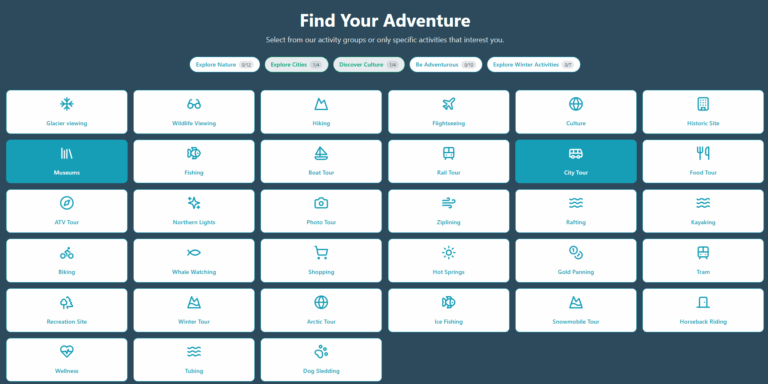
Cruise + Land Planning Can Be Confusing
Only a few Alaska cruise ports connect to the road system. However, it is incredibly easily for visitors to combine cruise and land travel, either by booking a Cruisetour (offered by many major cruise lines), or by adding on your own, independent exploration of Alaska by land.
Our trip planner helps cruise passengers design the perfect land extension after arriving in Whittier, Seward, or Skagway.
Three popular Cruise + Land route options include:
Inside Passage + Denali National Park
Inside Passage + Kenai Peninsula
Inside Passage + Dawson City
If you prefer a ready-made experience, explore our selection of Bell’s Tours
How the Free Alaska Trip Planner Works
Using the Bell’s Alaska Trip Planner is simple:
Select your travel style — Cruise, Cruise + Land, Rental Car, Rental Motorhome, or Drive Your Own Vehicle.
Choose a pre-planned route or pick the specific towns you want to visit. For first-timers, starting with a route removes the guesswork.
Pick your accommodation preferences — hotel, lodge, B&B, cabin, RV parks, or a mix.
Tell us your interests — Select a activty group: Nature, Culture, Cities, Adventure, or Winter. Or, customize to meet your desires.
Get personalized results with lodging and experiences that match your selections.
Refine your results by removing listings that don’t fit.
Email yourself the itinerary for easy review and booking.
No login. No cost. No spam.
Just an organized list of what matters most to you.
Plan Your Alaska National Parks Adventure
Alaska has some of the most extraordinary national parks on Earth — each one unique. These parks are often the main reason travelers visit the Last Frontier.
Denali National Park: Home to North America’s highest peak.
Kenai Fjords National Park: Known for its glaciers and boat tours.
Wrangell–St. Elias National Park: The largest in the U.S., filled with mountains and history.
Glacier Bay National Park: A marine sanctuary of ice and wildlife, best explored by cruise.
Katmai National Park: Famous for Brooks Falls and bear viewing.
Lake Clark National Park: Remote, wild, and breathtakingly beautiful.
Lesser-known parks like Gates of the Arctic and Kobuk Valley offer incredible solitude for true wilderness seekers.
Denali National Park is the crown jewel of Alaska’s interior — six million acres of tundra valleys, braided rivers, boreal forest, and towering snow-capped mountains. At its center sits Denali, North America’s tallest peak at 20,310 feet. On a clear day, seeing Denali rise above the Alaska Range is a moment travelers never forget.
How to Get There
Drive 4.5–5 hours from Anchorage or about 2 hours from Fairbanks on the Parks Highway.
Ride the Alaska Railroad from Seward, Anchorage, or Fairbanks.
Join a cruise-tour coach as part of a land package.
Book a flightseeing tour from Talkeetna or Anchorage.
You can drive a personal vehicle only to Mile 15 of the Park Road; beyond that, use park shuttles or bus tours. A 2021 landslide closed the road at Mile 43, but it’s expected to reopen fully by 2027.
When to Visit: Mid-June to early September. Early summer offers lush greenery; late August brings gold tundra and chances to see the Northern Lights.
Wildlife: Grizzly and black bears, Dall sheep, moose, caribou, and (if you’re lucky) wolves.
Visitor Volume: 400,000–600,000 annually — Alaska’s most-visited park that still feels wild.
Routes in the Trip Planner
Anchorage to Denali National Park & Fairbanks
Denali Highway Loop
Katmai National Park is one of the most unique wildlife destinations in the world — a remote, volcanic landscape where giant brown bears gather each summer to feast on salmon. This is where you’ll find Brooks Falls, home to iconic scene of bears catching salmon mid-air as they leap upstream.
How to Get There
Floatplane from Anchorage, Homer, or Kodiak
Flight to King Salmon, then floatplane or water taxi to Brooks Camp
Guided bear-viewing tours from Anchorage or Homer
Best Time to Visit: Late June through early September; July has peak salmon activity.
Each October, The national parks service runs the now famous “Fat Bear Week Contest” in a March Madness style bracket to see what bear is crowned champion as Alaska’s Fattest Bear, as they prepare for hibernation.
Visitor Volume: Around 35,000–40,000 annually — wild, remote, and uncrowded.
Routes in the Trip Planner
Anchorage to Denali National Park & Fairbanks
Anchorage to Kenai Peninsula
Select “Wildlife Viewing” in the planner, and bear-viewing options will appear in Anchorage and Homer.
Lake Clark National Park is one of Alaska’s hidden gems — wild, remote, and incredible natural beauty. It offers turquoise lakes, rugged mountains, active volcanoes, and world-class bear viewing, often with far fewer visitors than other national parks in Alaska.
How to Get There: Floatplane from Anchorage or Homer.
When to Visit: June to mid-September.
What to Do:
Bear viewing (similar to Katmai)
Rafting, hiking, camping, and fishing lodges
Small-group wilderness experiences
Visitor Volume: 15,000–20,000 per year.
Routes in the Trip Planner:
Anchorage to Denali National Park & Fairbanks
Anchorage to Kenai Peninsula
Select “Wildlife Viewing” in the planner, and bear-viewing options for Lake Clark will appear in Anchorage and Homer.
Wrangell–St. Elias is huge — at 13.2 million acres, it’s larger than Yellowstone, Yosemite, and Switzerland combined. It’s a land of towering mountains, blue glaciers, abandoned copper mines, and frontier-town history.
Access Options
- Drive the McCarthy Road into Kennecott and McCarthy
- Drive the Nabesna Road to access the more remote northern part of the park
- Flightseeing to McCarthy or Kennecott from Chitina
Top Things to Do
Explore the Kennecott Mines National Historic Landmark
Hike the Root Glacier Trail
Take a flightseeing tour over 16,000-foot peaks
Visit local eateries and small museums in McCarthy
Visitor Volume: 60,000–75,000 annually.
Routes in the Trip Planner
Anchorage to Valdez
Fairbanks to Valdez
Glacier Bay National Park and Preserve, in southeast Alaska, is a UNESCO World Heritage Site and Biosphere Reserve that protects more than 3 million acres of towering glaciers, snow-capped mountains, and deep fjord waters. Few places on Earth show glacial retreat and renewal as dramatically as Glacier Bay — a living laboratory for how landscapes evolve after ice melts. Visitors can witness calving glaciers thundering into the sea, see wildlife from humpback whales to bald eagles, and experience Alaska’s coastal wilderness from a front-row seat on the water.
How to Get There
90% of visitors arrive by cruise ship through the Inside Passage
Fly from Juneau to Gustavus, then drive to Bartlett Cove
Take the Alaska Marine Highway ferry to Gustavus or small-boat charter from Bartlett Cove into the National Park
Best Time: Late May to early September
Highlights: Glacier viewing cruises, kayaking, wildlife, and the Huna Tribal House.
Visitor Volume: 600,000–700,000 visitors annually.
Routes in the Trip Planner
“Cruise” → Inside Passage
“Cruise + Land” → Inside Passage + Denali or Kenai Peninsula
Explore Southcentral Alaska
Southcentral Alaska is the state’s most accessible adventure region — and a perfect starting point for first-time visitors. It combines big-city convenience in Anchorage with easy access to glaciers, wildlife, and mountain scenery.
Anchorage makes an ideal base for exploring much of Alaska’s southcentral region. Within a day’s drive, you can enjoy:
Chugach Mountain hikes and panoramic views from Flattop Mountain
Coastal Trail biking and walking along Cook Inlet
Museums and Native culture at the Anchorage Museum and Alaska Native Heritage Center
Day trips to glaciers and wildlife centers in every direction
Nearby:
Girdwood offers ski-town charm, a scenic tram at Alyeska Resort, and lush rainforest trails.
Palmer and Wasilla showcase Alaska’s farming heritage, musk ox farms, and Pioneer Peak views.
Anchorage also serves as the hub for many routes in the Alaska Trip Planner, whether you’re driving to Denali, the Kenai Peninsula, or Valdez.
The drive along Turnagain Arm — south from Anchorage on the Seward Highway — is one of the most scenic in North America. Towering mountains rise from the sea, waterfalls tumble from cliffs, and wildlife can often be spotted along the road.
Keep an eye out for:
Beluga whales near Beluga Point (especially on incoming tides)
Dall sheep perched high on rocky cliffs
Bore tides, a rare natural phenomenon in Cook Inlet
A must-stop highlight is the Alaska Wildlife Conservation Center, where you can safely view bears, moose, musk ox, and bison in a natural setting. It’s perfect for families and photographers alike.
A few hours northeast of Anchorage, Matanuska Glacier is one of the easiest glaciers in Alaska to walk on. Guided tours let you safely explore ice caves and blue crevasses — a thrilling experience for visitors of all ages.
Tip: You’ll never forget the crunch of your crampons on glacier ice under the summer sun.
Explore the Kenai Peninsula
The Kenai Peninsula is where mountains meet the sea — a region overflowing with classic Alaska experiences. It’s an easy drive from Anchorage, with scenic routes that lead to Seward, Cooper Landing, Soldotna, and Homer.
Seward is a gateway to the ocean and home to Kenai Fjords National Park, one of Alaska’s most popular destinations. Here, massive glaciers flow from the Harding Icefield into the sea, creating a world of ice, wildlife, and waterfalls.
Top Experiences
Glacier & Wildlife Cruises with Major Marine Tours or Kenai Fjords Tours — watch for whales, sea lions, puffins, and calving glaciers.
Harding Icefield Trail — a challenging but rewarding hike with epic views.
Exit Glacier — accessible by car, with an easy trail to the glacier’s edge.
Alaska SeaLife Center — Alaska’s only aquarium, highlighting marine conservation and education.
Seward is a must for anyone planning a Kenai Peninsula itinerary, and a highlight of any Alaska road trip.
Quirky and fascinating, Whittier is a tiny port town reached through a one-lane tunnel — the longest highway tunnel in North America. Once you arrive, you’ll find adventure all around:
Portage Glacier and Begich–Boggs Visitor Center
Day cruises and kayaking on Prince William Sound
Opportunities to spot otters, seals, and seabirds among the icebergs
Many Alaska cruises include Whittier as an embarkation or disembarkation point, making it a natural transition between cruise and land portions of your trip.
Set along the turquoise Kenai River, Cooper Landing is famous for its fishing, rafting, and relaxed mountain-town atmosphere.
It’s a peaceful stop between Anchorage, Soldotna, and Seward, with hiking trails, scenic overlooks, and riverside cabins perfect for recharging after a long day of driving.
The friendly town of Soldotna is a hub for anglers and river lovers. Boardwalks line the Kenai River for easy access to world-class salmon fishing, while local cafes and breweries give it a laid-back, welcoming vibe.
Homer sits at the southern tip of the Kenai Peninsula and feels like the edge of the world — in the best possible way. It’s famous for:
Bear viewing flights across Cook Inlet to Katmai and Lake Clark National Parks
Ocean fishing charters and halibut tournaments
Art galleries and seaside dining
Kachemak Bay State Park, just across the bay
The iconic Homer Spit, a five-mile stretch of land reaching into the water
Homer is one of those places you could easily spend several days — it captures Alaska’s coastal charm perfectly.
Southeast Alaska & Cruise Planning
If you’re cruising to Alaska, you’re in for a breathtaking experience. Combining cruise and land travel makes for the ultimate Alaska itinerary — and our Trip Planner helps you organize both seamlessly.
Juneau — Ride the Goldbelt Tram, visit Mendenhall Glacier, and go whale watching.
Ketchikan — Discover Native totem poles and fly over Misty Fjords National Monument.
Sitka — Explore Russian and Aleut heritage, plus incredible wildlife tours.
Skagway — Step back in time on the White Pass & Yukon Route Railway.
Haines — Scenic fjord landscapes and world-class eagle watching.
Each port has its own personality, from rainforest charm to frontier history. Many travelers plan pre- or post-cruise land tours to see Denali, the Kenai, or even drive into the Yukon.
If you’re comparing or booking cruises, look for trusted sites offering last-minute deals and itinerary options.
👉 CruiseDirect
CruiseDirect frequently features Inside Passage cruise discounts, Glacier Bay routes, and combination Cruise + Land packages that align perfectly with the itineraries featured in the Bell’s Alaska Trip Planner.
Yukon & Alaska Highway RV Trip Planner
Driving the historic Alaska Highway (Alcan) through British Columbia and the Yukon is one of North America’s greatest road trips. It’s a journey filled with wildlife, mountains, small town’s and memories you’ll never forget.
Expect:
Moose, bison, caribou, and bear sightings
Vast mountain scenery and wilderness camping
Northern Lights potential in late August and September
Friendly, welcoming northern communities
The Bell’s Alaska Trip Planner is the only tool that provides specific lodging and activity listings in and between towns along the Alaska Highway — perfect for RVers and road trippers who want to go beyond the map and into real adventure.
The Top of the World Highway — Fairbanks to Whitehorse via Dawson City
The Klondike Highway Loop — Whitehorse to Dawson City and back
The Golden Circle Route — Whitehorse, Skagway, Juneau, Haines, and back
The Cassiar Highway — A wilder alternative through northern British Columbia
Alaska Highway Access Routes — From Alberta and British Columbia
The Alaska Marine Highway Ferry — Bellingham through the Inside Passage, driving from Haines to Anchorage
You can also plan Alaska-only routes:
Anchorage to Denali National Park & Fairbanks (via Parks Highway)
Anchorage to Kenai Peninsula (a loop through coastal towns)
Anchorage to Valdez (through Wrangell–St. Elias and Glennallen)
Fairbanks to Valdez (following the Richardson Highway)
The Denali Highway Loop — A rugged but spectacular off-the-beaten-path option
No matter which route you choose, the Alaska Trip Planner helps you filter for what matters most — from RV parks and fishing spots to hiking trails and local attractions.
Why We Created This Free Tool
For more than 60 years, our family has helped travelers explore Alaska and the Yukon through:
Printed guidebooks
Detailed road maps
Digital planning tools
Local business partnerships
We know the roads, distances, and hidden gems of the North better than anyone — and we built this planner to make your trip easier, more personal, and more rewarding.
Our mission:
✅ Support local BC, Yukon & Alaska businesses
✅ Provide verified lodging, activity, and transportation listings
✅ Avoid random internet lists or AI-generated advice
✅ Highlight over 1,100 businesses across 50+ northern towns
We love the North — and we love helping others discover it.
Start Planning Your Alaska Trip
Ready to design your perfect Alaska adventure?
No signup. No cost. Just real local knowledge — and your dream Alaska itinerary.
Frequently Asked Questions
Yes — completely free to use, no subscriptions or hidden fees.
Absolutely. It’s designed to match your interests, filter activities and accommodations, and let you build a custom Alaska itinerary that’s easy to book.
Yes — from Dawson Creek to Fairbanks. It’s the only planner that filters relevant stops and activities instead of overwhelming you with random results.
Most first-time visitors spend 7–14 days. If you’re driving the Alaska Highway, allow three to four weeks for a relaxed trip.
Not necessarily. You can see much of Alaska by train (the Alaska Railroad) or via cruise extensions. But for flexibility, a car or RV is ideal.
June–August is peak summer; late May and early September are ideal for shoulder-season travel with fewer crowds.
Alaska Travel Tips
Sign up for our 4-part email series to discover critical information for planning your ultimate Alaska vacation!
